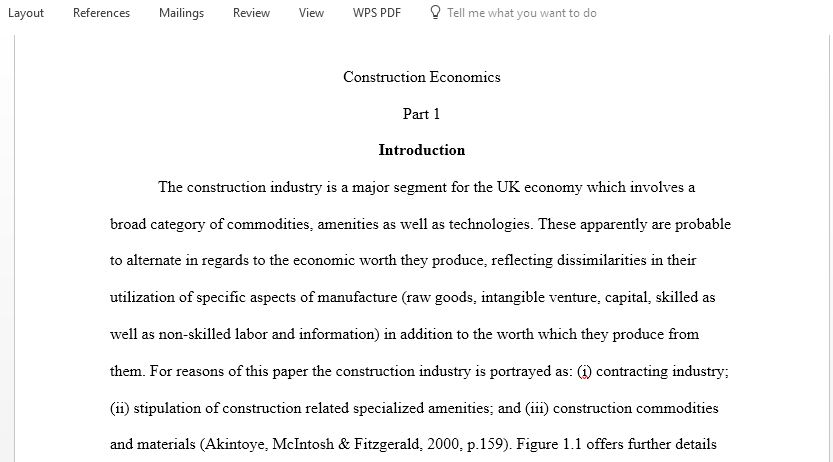The Economics of Construction: Economics, Sectors & Industries
The Economics of Construction: Economics, Sectors & Industries. Proposition A: Capital projects involve the development and then the operation of durable (tangible or intangible) assets. Any capital project (e.g. IT, shipbuilding, aerospace, pharmaceutical, film projects, as well as transport or retail or education etc projects involving building and civil engineering, i.e. so-called ‘construction’ projects) has an initial period of negative net cash flow for the owner, as resources are used before revenues are generated. This can be called the asset-construction or asset-development period. During this period project owners have to pay project contractors and suppliers. It is followed by a longer operating period, during which self-funding projects should generate positive net cash flows for their owners, from project revenues in excess of project operating expenditures. Eventually, operating expenditures per period tend to rise, and project revenues per period tend to fall, together bringing an end to the project’s economic life.
Proposition B: Most commonly, construction is performed for the owner by one or more construction contractor(s), but operation is performed by the owner, or by another operating contractor – but note existence of DBO contracts, in which one contractor manages both asset-production (construction) and asset-use (operation) for the asset owner.
Answer preview for The Economics of Construction: Economics, Sectors & Industries
Access the full answer containing 3050 words by clicking the below purchase button

